The Fire Testing Centre is staffed by PhDs and PhD students focusing on research and development projects.
Fields of application.
Our experts support everyone in the construction industry who wants to:
• implement innovative solutions.
• develop new calculation methods.
• better understand physical phenomena.
• carry out research to substantiate technical proposals for inclusion in new standards.
The R&D team at the Fire Testing Centre works closely with several French and international partners, notably with universities such as Imperial College London, the University of Liège, the University of Edinburgh, the University of Bordeaux, INSA in Rennes, the University of Braunschweig, Hopkins University in Baltimore, and the Polytechnic University of Milan.
Some examples of research and development projects carried out by the team are presented below:
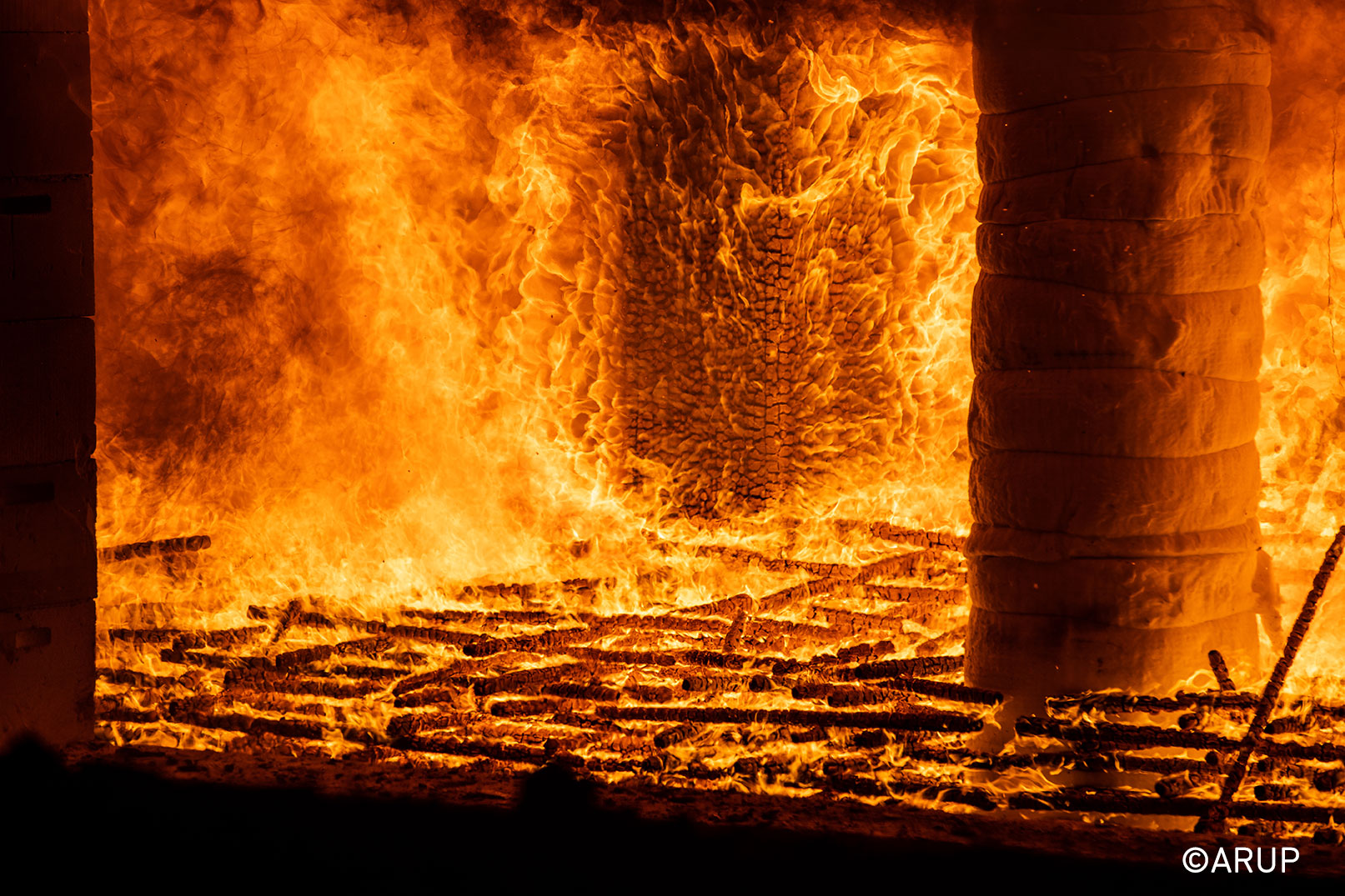
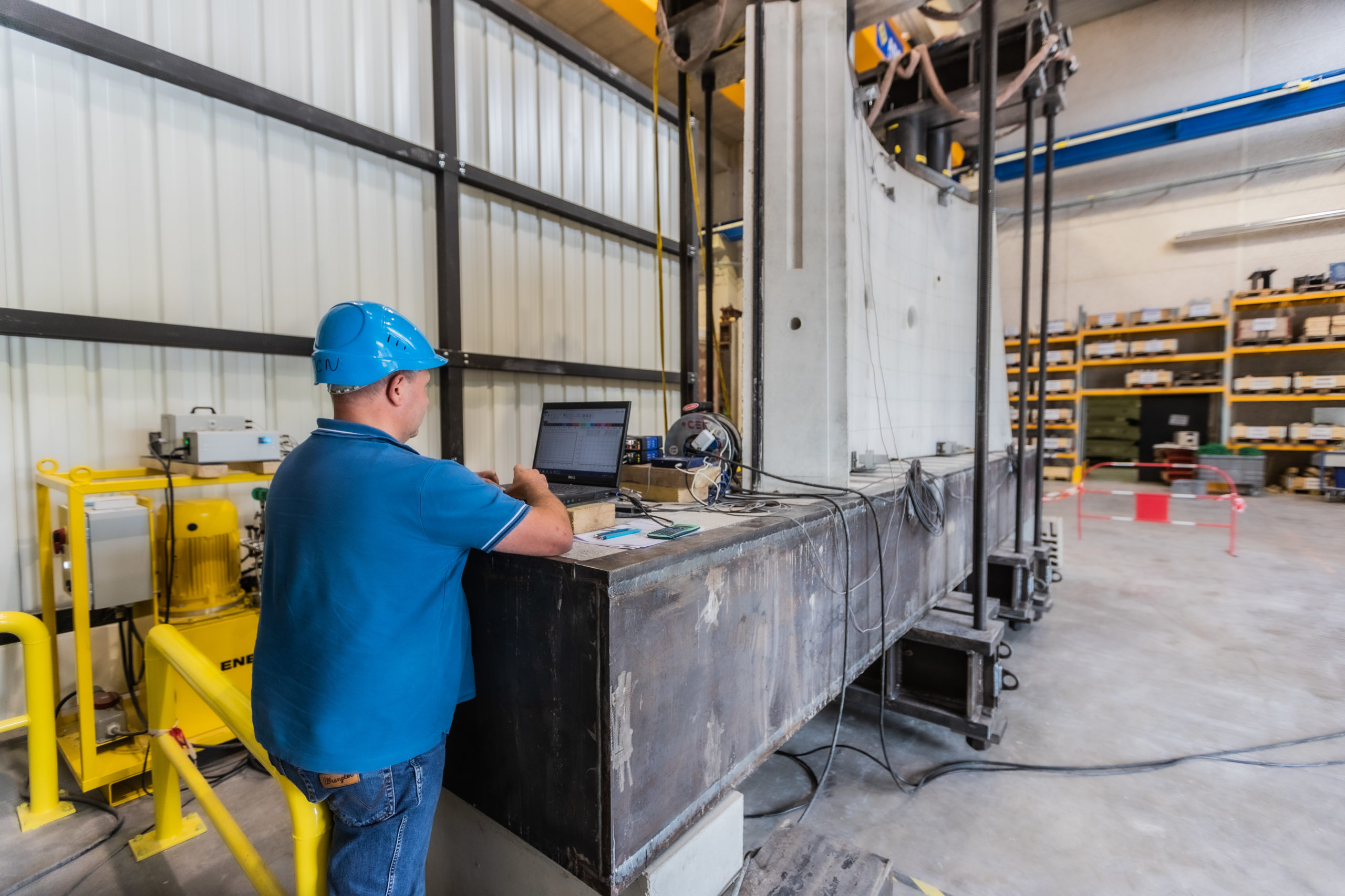

Hybrid fire
resistance tests.
To optimize the methods for assessing the fire-resistance performance of construction elements, the Fire Testing Centre has for many years been actively developing an innovative hybrid testing technique investigated by successive doctoral theses, i.e. that of Ana Sauca, presented in 2017, and that of Silvio Renard, presented in 2021, in partnership with Prof. Jean-Marc Franssen of the University of Liège and Jean-Christophe Mindeguia of the University of Bordeaux.
A new milestone was reached in 2020 with the completion of the world’s first hybrid test with this level of complexity (3 degrees of freedom). A hybrid fire-testing approach is based on a physical and numerical sub-structuring method. To assess the fire performance of a part of a building structure, a computer simulation using the SAFIR program is carried out simultaneously with a test in the Promethée furnace, which has unique resources for measuring and reproducing forces and stresses.
This method can do what standardized test methods and calculation methods cannot do independently, i.e. deal with innovative construction processes and, in some cases, more precisely, more suitably and less unfavourably assess the performance of the elements tested.
This provides designers and manufacturers with data for optimizing construction elements and/or improving the level of fire safety.
Hybrid fire testing is a methodology of a new generation for fire testing that, up to a point, replaces a full-scale fire test on an entire structure.
“Travelling fires”.
This research programme, in collaboration with Imperial College, ARUP, ITB, and the Ozarow Fire Centre, is dedicated to fire dynamics. It aims to develop the new Travelling Fires methodology based on full-scale experimental campaign in a large, open-plan compartment (Area = 384 m²) in Poland; this consisted of x-ONE (September 2017) and x-TWO (May 2019).
This research programme, in collaboration with the University of Edinburgh, the University of Bordeaux, Brandskyddslaget, IBMB-Braunchweig and the University of Liège, aims to understand the applicability of standardised fire resistance tests to combustible materials. The project has several objectives, such as the quantification of the energy contribution of combustible materials to standard fire test, the influence of combustible surfaces and ventilation conditions on the compartment fire dynamics (including the impact on the external flame) and the thermo-mechanical behaviour of a structure under conventional and real fires.
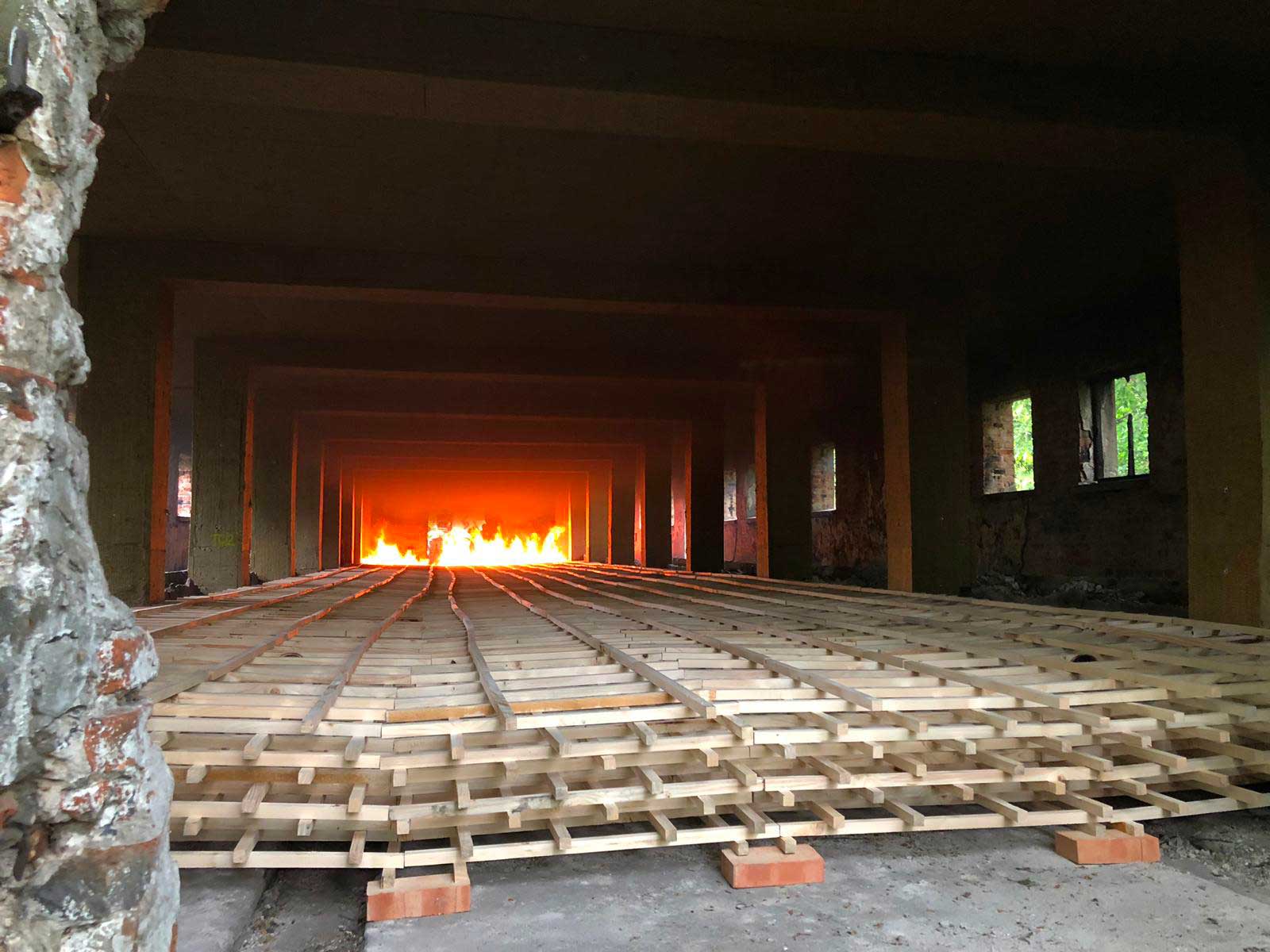
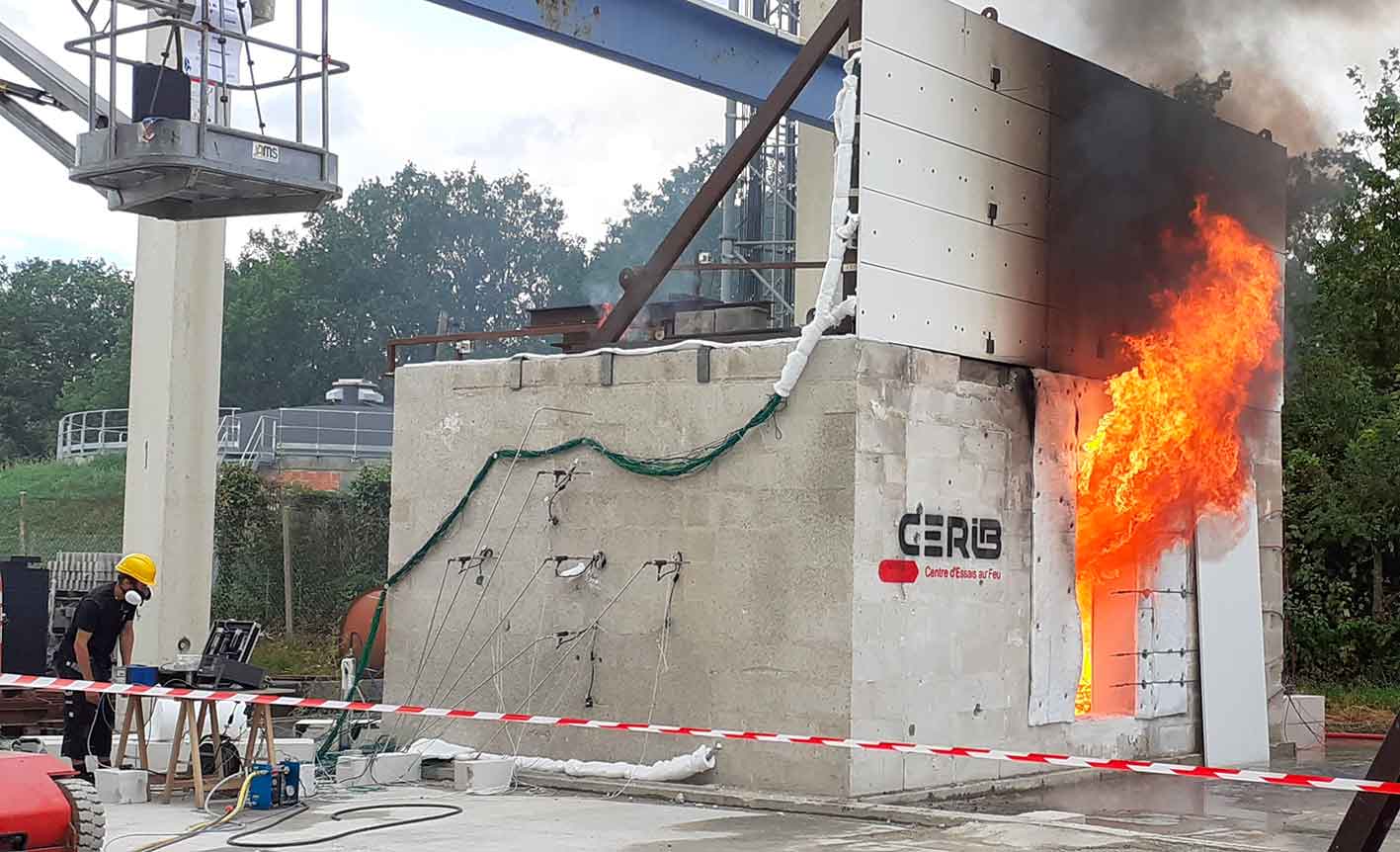
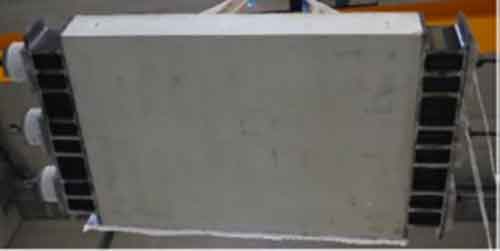
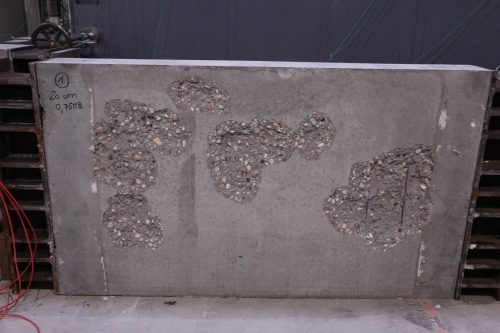

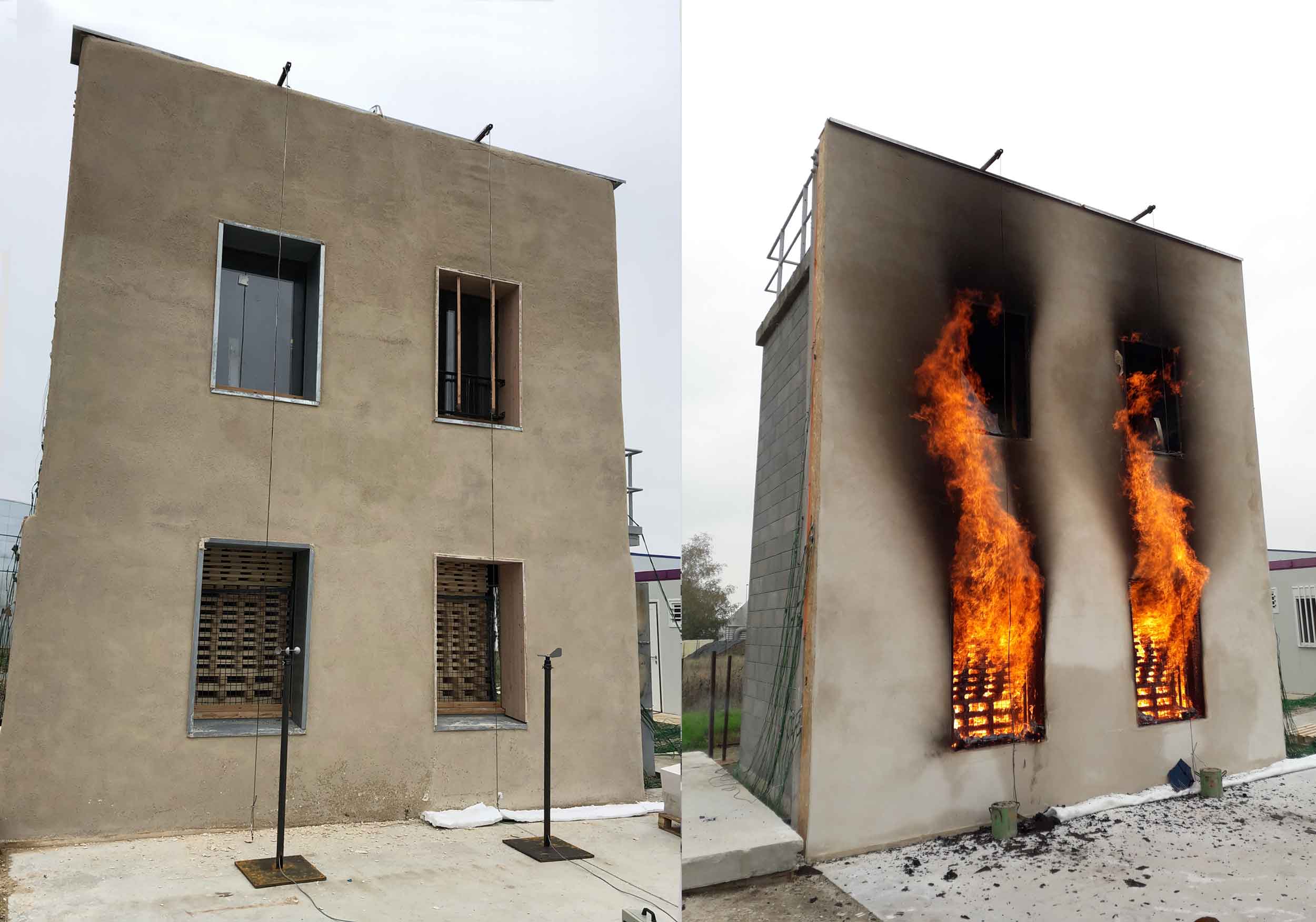
“Development of an intermediate-scale tool for characterizing concrete spalling”.
This research programme conducted in collaboration with RISE, EDF, and Brandskyddslaget, aims to develop test methods for characterizing concrete spalling at the intermediate scale. It is part of the work carried out internationally by RILEM group ‘256-SPF: Spalling of concrete due to fire: testing and modelling’.
Support for “Construire en Chanvre”.
The Fire Testing Centre assisted the association ‘Construire en Chanvre’ for evaluating the fire performance of timber-frame walls encased in hempcrete. A special methodology was used to extend the test results to the entire family of hempcretes as much as possible. Two optimized screening tests based on the material data provided by ‘Construire en Chanvre’ were carried out on mockups, using a range of parameters (binder type and dosage, application method, finishes, etc.) to define an ‘envelope’ configuration. The fire-resistance classification obtained (EI 240) and the LEPIR II façade-test result were generalizable to all other validated configurations. Instrumentation designed for monitoring heat transfer within the hempcretes was used for all the elements subjected to the fire tests.
Regulatory documents prepared by the Fire Testing Centre for this study

